new posts in all blogs
Viewing: Blog Posts Tagged with: kobo, Most Recent at Top [Help]
Results 1 - 24 of 24
How to use this Page
You are viewing the most recent posts tagged with the words: kobo in the JacketFlap blog reader. What is a tag? Think of a tag as a keyword or category label. Tags can both help you find posts on JacketFlap.com as well as provide an easy way for you to "remember" and classify posts for later recall. Try adding a tag yourself by clicking "Add a tag" below a post's header. Scroll down through the list of Recent Posts in the left column and click on a post title that sounds interesting. You can view all posts from a specific blog by clicking the Blog name in the right column, or you can click a 'More Posts from this Blog' link in any individual post.
Kobo, a Rakuten company, has partnered with the American Booksellers Association (ABA) to introduce a new program that encourages digital reading on a local level.
The program is called eRead Local and is designed to get ABA members to sell eBooks via Kobo and compensates booksellers for doing so. Participating ABA members will receive $5 USD for every reader they sign up for a Kobo account. In addition, these customers that create Kobo accounts through an affiliate ABA member will receive a $5 USD credit toward their first purchase of a Kobo eBook. Here is more from the press release:
ABA members who acquire 100 new customers will be entered for a chance to win an in-store event with a bestselling author, and those who acquire 50 new customers will be eligible for a chance to win Kobo eReaders for in-store customer contests to help generate further in-store foot traffic.
The program will run for 100 days beginning this summer, with the exact timing still to be decided.
 We’ve often wondered when books would be offered as in-flight entertainment here at GalleyCat. For years, Virgin America had books listed on its entertainment module only to be greeted with a “coming soon” note, before it was removed altogether.
We’ve often wondered when books would be offered as in-flight entertainment here at GalleyCat. For years, Virgin America had books listed on its entertainment module only to be greeted with a “coming soon” note, before it was removed altogether.
But the promise has finally come true thanks to a new partnership between Southwest Airlines, e-book company Kobo and Bauer Communications. Together the companies are making free e-books available to passengers on Southwest planes while the planes are in flight.
Hundreds of digital titles will be available to fliers from Kobo’s digital reading platform via the airline’s inflight entertainment portal. The offering includes full books and extended previews bestsellers and new releases from publishers including: Penguin Random House, HarperCollins Publishers LLC, Simon & Schuster, Inc., Hachette Book Group, Macmillan Publishers, and Open Road Media, among others.
Travelers can use their own WiFi-enabled devices to connect to the entertainment portal and access the titles. After the flight, readers will get a follow up email with information on how to purchase the e-book if they want.
Kobo Aura H2O is the first premium eReader to have a waterproof* and dustproof design that allows you to take it worry-free from the beach, to the bath, to your bed. Plus, with up to 2 months of battery life, you have the freedom to keep reading, wherever you go. So if you drop it […]
Rakuten’s eReader company Kobo has reveled a new eReader called the Kobo Glo HD which rivals Amazon’s Kindle Voyage.
Kobo’s new device, which comes out on May 1st, features a high resolution 6-inch eInk display. The device is only $129.99, and competes directly with the $199.99 Kindle Voyage.
Here is more about the device from the Kobo website:
Kobo Glo HD is lighter than a hardcover book and lets you store thousands of eBooks. Take your entire library on vacation or wherever you go and switch between eBooks easily for a simpler, more convenient way to read. Plus, with up to 2 months of battery life, read an entire eBook on a single charge and enjoy the freedom of leaving your charger behind.
By: David Chuka,
on 2/20/2015
Blog:
(
Login to Add to MyJacketFlap)
JacketFlap tags:
kidlit,
apple,
Picture Story Books,
kobo,
david chuka,
funny books for kids,
On My Mind,
billy and monster,
bookbub,
Add a tag
Great news!
My book – Billy and the Monster who Ate All the Easter Eggs – has just been accepted by Bookbub and will be featured on March 21st.
Why is this great news I hear you say? Well it is great news as Bookbub has more than a million subscribers and will email everyone on their list interested in Children’s books. BookBub email their subscribers daily and offer to them eBooks at a discount. I have to admit that I have discovered and downloaded many eBooks recommended by BookBub. You can actually sign up here.
One of my books – I Love Baby Animals – got featured on Bookbub about a year ago and became a Top 10 best-selling book on the Amazon store in the Children’s category. What’s even more exciting this time, is that the book will be available to readers on Apple, Kobo, Scribd, Barnes and Noble plus Foundry.
If you can’t wait for March 21st, then grab a copy of Billy and the Monster who Ate All the Easter Eggs at the link below
Biily and Monster on Amazon
Billy and Monster on Apple
Billy and Monster on Barnes and Noble
Billy and Monster on Nook
Billy and Monster on Kobo
Billy and Monster on Scribd
Billy and Monster on Foundry
Have you all been wondering how my Kobo and I have been getting along? It’s okay if you haven’t but I’m about to tell you anyway.
Kobo Touch is so much smaller than the two keyboard Kindles I managed to kill. As a consequence it is also lighter. I didn’t think it would matter that much but my bag feels weirdly light these days and when I leave for work in the morning it kind of freaks me out because I think I am forgetting something. I worried that not having a real keyboard would hinder me in taking any kind of notes, but you know what? I don’t really do much in the way of notetaking to begin with so it hasn’t been an issue. The highlighting, that’s where it is at.
Since it is a touch screen all I have to do is put my finger on the screen and slowly drag it across the passage I want to highlight. When I lift up my finger, Kobo asks me if I want to highlight the passage or write a note. I tap highlight and it highlights. I tap note and I get a text box and a touch keyboard. Easy. Because Kobo Touch is eink the dragging my finger to highlight is a bit slow. I also find highlighting with my finger to be imprecise. This is not Kobo’s fault, this is also the case with any other touch screen I’ve used including my iPad. I find I tend to have extra words at the end of my highlighted passages but that’s ok. I’ve not yet tried to access my highlighted passages so I don’t know how easy that will be, but so far so good.
Turning pages is pretty easy. The screen is divided into thirds. The left and right third of the screen is for turning pages. A finger swipe to the left to turn the page forward. A swipe to the right to turn the page back. I’m still getting the hang of just the right pressure and speed. Sometimes I swipe too fast and nothing happens. Sometimes, I don’t know how, I manage to turn several pages at a time. Turning more than one page at a time happened so often at first that I somehow convinced myself that the right side of the screen was for paging forward and the left side for paging back. It took me a week to figure out this wasn’t the case.
A tap on the middle third of the screen pulls up the main menu. The menu screen is a lot different that Kindle. Kindle just listed my books in my choice of a few different orders. If I wanted anything else, I had to press the menu button and then a popup menu would appear from which I could select search, settings, etc, etc. Kobo has all this stuff on one menu screen in tiny blocks of various sizes that I find hard to read and confusing. But since I don’t spend much time on this screen, it is just an annoyance I have to put up with when switching books.
It might be my imagination, but Kobo has more graduated font sizes and a wider selection of fonts than Kindle did. I like that. Because of the confusing menu it took me a bit to figure out how to change my font and its size, but it is all good now.
An awesomely awesome thing about Kobo is that is uses actual page numbers and has no percentage bar. I didn’t think the percentage bar on Kindle ever really bothered me until I got Kobo and had page numbers again. The page numbers make me so very happy. Sometimes it is the little things that matter most.
Last weekend I dragged Bookman out in the cold and snow to look for a cover for Kobo. Kobo is the same size as a Nook Touch so I figured I could go to Barnes and Noble and find something acceptable. Nope. All they had were covers for HD Nooks and Samsung Galaxy tablets. When we asked about Touch covers they were supremely unhelpful and didn’t appear to really care about whether or not I bought something from them. Fine. So we didn’t even stay to look at books even though we had a 20% off coupon. The irony, of course, is that I ended up buying a lovely, inexpensive cover from Amazon, the very place I was trying to avoid buying from to begin with.

Kobo’s coy sweater
The cover has not yet arrived. It is being delivered by dog sled apparently. I had been wrapping Kobo in a tea towel to protect the screen. Want to feel like a big dork? Sit down on the metro train and pull a towel-wrapped ereader from your bag. Bookman took pity on me and Kobo and crocheted Kobo a sweater. I like the Kobo sweater so much I almost cancelled the fabric cover order. But it will be nice for Kobo to be able to change clothes now and then. Perhaps Kobo might end up with all sorts of fashionable outfits, something for any and every occasion!
Kobo and I are still getting to know each other, but so far we are getting along pretty well. One of these days we will try and borrow an ebook from the library and see how that goes. For now, I am reading Jane Austen’s Emma on Kobo and having a lovely time.
Filed under:
Books,
ebooks Tagged:
Kobo 


Marvel collected editions are already available on iVerse, and some other digital platforms, and now, Kobo, the Canadian-based device that also offers apps for Mac, Android, and desktop. Marvel periodicals continues to be exclusive at Comixology and their own Marvel Unlimited All-you-can-ead service, but the GNs are everywhere.
What did we tell you about attempts to diversify digital distribution?
Dozens of beloved Marvel comic book series are now available on Kobo’s digital reading platform. Blockbuster titles such as Captain America: Winter Soldier Vol. 1 and Infinity Gauntlet are available for purchase at Kobo.com, giving fangirls and fanboys a universe worth of exciting Marvel Comics. Super Hero fanatics young and old can enjoy these illustrated eBooks on Kobo devices, such as the full-color Kobo Arc 10HD Android tablet, or via free reading apps available for most popular tablets and smartphones.
“For more than 75 years, Marvel has been transporting comic fans to exciting new galaxies,” says Santiago Melo, Merchandiser, Kobo. “Tackling big issues with larger than life characters, these stories continue to be a constant source of enrichment in our popular culture and we couldn’t be happier to welcome them to the Kobo family.”
“Marvel is excited about our partnership with Kobo and happy to have the opportunity to provide fans, new and existing, another great way to experience our legendary content,” says David Gabriel, SVP Sales and Marketing for Marvel Entertainment.
The Kindle saga has now come to an end.
If you recall, earlier this year my Kindle 2 began giving me trouble. I reset it to its factory settings and it behaved itself until about the end of August when the screen decided it was no longer going to work. So after four years together, it left me for what I hope will be a happier place in Digital Device Heaven.
I moved all my Kindle content over to Bookman’s old Kindle 1 and the two of us were getting along just fine. The Kindle 1 battery only held a charge for 5-6 days but that was fine. I planned on buying it a new battery once the current one was demanding to be charged every day or two. But apparently we were not getting along as well as I thought we were because two weeks ago Kindle 1 decided it would no longer do highlights or bookmarks. It told me my memory was full and I had to delete books. Wow, I didn’t realize I had that many, but ok, I deleted about 10 books. That should be enough.
Nope.
So then I deleted all but 20 books. That definitely would be enough free space.
Nope.
So then I thought, maybe it was the book I was reading. All the trouble had begun when I downloaded a book from the library Being Wrong: Adventures in the Margin of Error by Kathryn Schulz. Perhaps the whole highlighting trouble was just to do with some new DRM on library ebooks. So I opened Jane Austen’s Emma, a DRM-free Project Gutenberg book. And it still would not highlight. And when I tried to bookmark a page it said there was not enough memory.
Clearly it is the Kindle going kablooey. I cannot read on it if I cannot highlight. Though I have continued to read Being Wrong, which I am enjoying very much. However, it has been so long since I have read a book and not marked it up in some manner that it feels totally weird and I am having a hard time remembering things about the book. I briefly considered giving up reading it, but I don’t want to give it up. I have kept reading and when I am done with it, I won’t be able to really blog about it because I won’t be able to remember enough specifics.
Isn’t that interesting? Between college and blogging I had an entire decade in which I read books and didn’t mark them up and I was happy as a clam. Of course, ask me what I read during that decade and I would be hard pressed to come up with much. But then sometimes now at the end of the year when I look back on my books read there is one book I don’t recall reading. Of course I can read the blog post I wrote about it and it will come back, so that’s something. I find it somewhat amusing that I am reading a book called Being Wrong with a constant feeling of wrongness hovering around me.
With the Kindle 1 at death’s door, I was also having a hard debate with myself over whether to get another ereader. If it is only going to last for four or five years, is it really worth it? And if I did get another ereader, what would I get? I didn’t want another Kindle. Amazon has gotten too big and even nastier as a company. It’s kind of like the Walmart of the internet and I refuse to shop at Walmart which means I could not in good conscious buy anything from Amazon. I wouldn’t want a Nook. I don’t have anything against Barnes and Noble, but they are having such business problems with the Nook that with my luck I’d get one and next year they would no longer sell or support them.
I wasn’t going to get a new ereader then. I would just have to figure out how to manage my reading glasses on the bus and metro train and get used to carrying a book in my bag. I wasn’t happy about the prospect, but I was going to make it work.
Then Bookman told me I was being daft. You use the ereader five days a week and for those five days you spend more time reading on it than you do in paper books. You don’t want to mess around with reading glasses, especially in the winter. I’m going to get you a new Kindle. No! I said, not a Kindle. A Nook then? he asked. No not a Nook either. What then? I don’t know, I said. Well, you think about it, he said.
I thought about it. He was right that I do use the ereader a lot and I was dreading trying to juggle book and glasses and mittens and lenses fogging up or getting scratched and all that. I was still reluctant though. Bookman insisted again and told me if I didn’t decide he would just get me a Kindle. No Kindle. Amazon bad. Plus, I am clearly a Kindle killer. I’ve already killed two this year and did not want to make it a trifecta.
The only other alternative to Kindle and Nook is Kobo. I looked at the Kobo website. Maybe a Kobo Touch? Bookman ordered one before I had time to make up reasons why I shouldn’t have one. Kobo is in Canada. It took two weeks for it to get here. It arrived Friday. It’s so tiny. I need to find a cover for it to protect it in my bag. Since I won’t start carrying it until I am finished with Being Wrong on the Kindle, I have time to find a cover.
Yesterday I did all the setup stuff with it and added a couple of public domain books. I played around with it to figure out how to highlight and turn pages and get the various menus and how to make the font bigger so I can read without my glasses. The touch screen is nice, though in comparison with my iPad its responsiveness is frustratingly slow especially when trying to highlight something. But it is e-ink and at least I can highlight things!
I think Kobo and I will get along just fine. I’ll be finishing up the book on Kindle and it can join its Kindle 2 friend in Digital Device Heaven. Then Kobo and I can begin what I hope will be a long and beautiful friendship.
Filed under:
Books,
ebooks,
Kindle,
Technology Tagged:
Kobo 

My books were out on Amazon, KOBO, Barnes & Noble, and all the other available venues. It was easy since my formatter did everything for me, but last week I switched to Amazon only.
I started paying attention to the e-mails I received from the other companies, advertising books for sale, and I noticed it was the same everywhere, all the bestsellers were being promoted, not a midlist author among them.
It was the same everywhere except on Amazon. I saw my books being advertised along with others. That is a brilliant and savvy move on Amazon’s part, because among those lesser names could be the next huge bestseller. Why is it that only Amazon recognizes that possibility? Where are the others? Why is Amazon the only one giving midlist authors a chance to build their readership?
I fully recognize that bestsellers make money, they sell large numbers of books, and this is a business, and as such must turn a profit to survive. But surely there is room for a different voice, a new breath, those writers that aren’t main stream but have something to say that may not be quite middle of the road, but may succeed beyond expectations. Surely that is how a business grows, and markets expand.
Amazon recognizes the value of smart advertising, and in reality it costs them little to add a few new writers to their ad campaigns. Why can’t the others do the same?
They made the decision for me, I have more to gain when I give Amazon my exclusive rights. Amazon offers KDP Select, Paid Library Lending, discounted or free promotion days; it’s up to me to decide how to market my books. I have plenty of opportunities to promote within Amazon, and with their resources I’m better off.
The issues about market and pricing control are complex, and many claim Amazon wants to control the market, currently the battle with Hachette is an example. In reality what company wouldn’t want to be in Amazon’s shoes?
From my perspective, as a small midlist author, I’ll stay with Amazon only, for growth and potential new readership, at least they give me a chance.
Cheers
Margot Justes
Blood Art
A Hotel in Paris
A Hotel in Bath
A Fire Within
www.mjustes.com
For the last few years, the best options for Indie publishers to publish an eBook have been Kindle, Nook and Apple iBooks. Now, there’s another big competitor on the scene, Kobo Books.
Kobo’s Writing Life opens the market to authors and provides exciting new opportunities. Especially exciting is the collaboration with independent bookstores and the American Bookseller’s Association. Today, Mark Lefebvre, Director of Self-Publishing and Author Relations for Kobo stops by to discuss their new interface for Indies. I met him at a conference in Oregon in July and immediately went home to upload my ebooks to KWL. It was a simple process and I wanted to share this with you.

Mark Lefebvre, Director, Self Publishing & Author Relations, Kobo Writing Life. I met Mark at a conference in Oregon in July, 2013.
Question: At the Oregon conference, I had my first chance to see a Kobo reader and thought it was fantastic. I loved the Kobo Mini’s small size, how it felt in the hand and the clean reading interface. How does the Kobo ebook reader compare to Kindle, Nook and iPads? Is there a color Kobo and do pages rotate from portrait to landscape?
Answer: Well, first of all I should explain that there isn’t a single Kobo reader, but rather a whole family of devices and apps – there’s pretty much a device or app for virtually any type of person, matching their own style and preference in an eReading experience. Yes, this might sound like a sales pitch, but there really is an amazing variety of options available in our devices.
We have e-ink devices such as the Kobo Touch , a 6” Pearl E Ink touchscreen device that the #1 rated device by WIRED magazine, to the Kobo Glo, which, like Touch, can stored up to 1000 eBooks, but has a built-in light that has been proven to be the most even 6” front-lit eReader, allowing comfortable reading day or night.

Kobo Touch eBook Reader
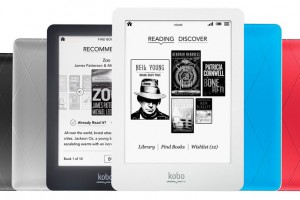
Kobo Glo eBook Reader
Our Kobo mini is the world’s smallest and lightest full-featured eReader with a 5” display, great for reading on the go, as it fits more easily into purses and jacket breast pockets. For die-hard readers who have to have the best of the best in eink reading experiences, Kobo Aura HD provides a premium reading experience for the discerning reader. With a 1440 X 1080 resolution and 265 dpi, along with a unique ergonomic design Aura HD delivers the ultimate crisp and natural feeling reading experience, and the built-in light allows for reading in all levels of light.
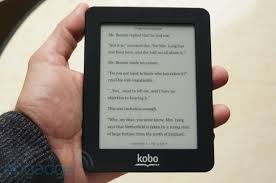
Kobo Mini eBook Reader
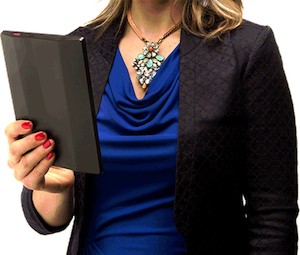
Kobo AuraHD eBook Reader
Our tablet, the Kobo ARC is a fully certified Android tablet with all of the tablet features that you would expect, such as a 1.5 GHz process and 1 GB of low-power RAM, but designed with the book lover in mind. Apart from the unique Tapestries discovery experience and Kobo’s wonderful Android reading experience (which does auto-rotate from portrait to landscape, unless you set a user preference to lock the screen in place), this is a fully functioning Android environment, meaning you have access to all of the apps available through Android (yes, including apps for competitor eRetailers, so you can read your Kindle and Nook library titles on your Kobo ARC)
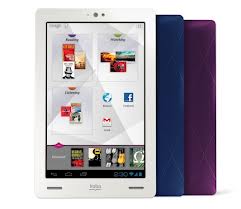
Kobo Arc eBook Reader
Apart from the readers, Kobo does have free apps for every single smart-phone operating system, MAC and PC desktops.
Question: Tell us about Kobo Writing Life. Why did Kobo establish this new option for Indie publishers and authors?
Answer: Kobo Writing Life was created as a way of removing barriers and allowing authors who wanted to work directly with Kobo to get their indie-published works into our catalog as easily as possible.
Kobo, a very collaborative company, accepts daily feeds from places like Smashwords and BookBaby along with hundreds of other distributors/aggregators, but many authors wanted to be able to connect directly with us and have tighter control over their prices, metadata, etc. So, after spending several months listening to authors (and using the existing platforms available – remember, many of the folks on the Kobo Writing Life [KWL] team are authors and are using the various different DIY platforms available), we designed a portal that would not only meet those needs, but also hopefully give them more insights and access to their data in an intuitive and beautifully designed manner.
We are delighted to hear back not only from authors but smaller publishers, that KWL makes it easy for them to get their eBooks into Kobo’s catalog as well as track their global sales live, so they can focus on what authors and publishers really want to do – create great books.
Question: What is the biggest tip you can tell us about using Kobo Writing Life? Is there a best-practices list somewhere?
Answer: Kobo Writing Life is a tool for authors and publishers to use. In many ways it is not all that different than any other online portal allowing indie publishers to get their books into as many global catalogs as possible.
We created the Kobo Writing Life blog at www.kobowritinglife.com in order to outline spotlights on authors, highlighting various things that they are doing, as well as to share information and insights about KWL, as well as the craft and business of writing (See Darcy’s post about starting your novel on Kobo Writing Life blog here), so that’s a great place to keep your eye out for updated tidbits and info.
But two key bits of advice I would offer (and which apply well beyond Kobo) would be this:
- Be consistent and careful and methodical with your metadata. Metadata is the term used to describe the data that describes your book. This would be the title, subtitle, author name, price, description, series title, subject category, etc. Metadata is critical because it is the data that is used to help customers FIND your work – so it needs to be accurate and clean and speak to your target audience
- Take advantage of EVERY opportunity to make your work available on ALL publishing platforms. This means, ensure your work is available on Kobo, but also Kindle, Nook, iBooks (Apple) as well as other places such as Sony, Smashwords, Diesel and a myriad of other platforms. Maximizing your global customer base and reach is a good long-term strategy that offers an author the broadest possible customer base. You never know, for sure, which platform your next biggest fan might already be reading on, so making your work available as broadly as possible makes it easier for readers to find you. (Darcy’s Note: My first three sales on Kobo went to Australia, Canada and South Africa! Wow. That is a global readership!)
For other tips, see KWL’s Technical Help blog.
Question: Kobo reaches a different market from the other ebook options. Where do you traditionally sell well?
Answer: Kobo’s catalog reaches about 200 countries around the world, and one of the unique ways we reach customers isn’t just through www.kobo.com but also through our regional partner websites. In Canada, for example, our books are not only available via Kobo’s website, but also through www.chapters.indigo.ca and in the UK through WHSmith and indie bookseller websites. The same goes for FNAC in France and Mondadori in Italy and hundreds of other retail partner websites around the world – this helps maximize an author’s exposure to more customers in more countries via multiple channels.
Kobo was born in and calls Canada home, so there’s no denying the fact that we have an incredibly huge reach within Canada. But we are also popular in the UK, Australia and New Zealand and are continuing to grow in the United States. Our partnership with the indie booksellers in the US, for example, means great opportunities for authors, for Kobo and for bookstores.
Question: Explain the new collaboration with the ABA and independent booksellers through Indie Bound. How will this expand markets for Indie publishers?
Answer: Kobo’s partnership with the American Booksellers Association means that independent bookstores across the U.S. can not only sell the line of fantastic Kobo reader devices in their stores, but also have a way of selling content to their customers. Customers interested in purchasing eBooks need not abandon their favorite local bookstore, but, instead, can purchase eBooks via that bookstore’s presence (check out www.indiebound.org) and support their local bookstore while buying eBooks.
One of the things we learned right away with respect to our fantastic partnership with the ABA is that the titles that sell well via the indie bookstore websites closely matches the types of books that would sell well IN that same indie bookstore. Meaning that, instead of a generic global list of bestselling titles, the eBooks that sell well through each of the bookstore websites mimic the types of books that local bookstore would be selling. Meaning, that you get the great flavor and style that the indie bookstores bring to the community, the great local recommendations and personal touch that these cultural community hubs offer the towns in cities they operate in.
Question: What is your favorite book that is ONLY available on Kobo? Please give us links to the Kobo desktop, iPad, iPhone, and Android apps so we can read it right away, too!
Answer: It’s never fair to any bookseller for their favorite book or author – there are simply TOO MANY great books and authors to follow.
A great thing that people SHOULD check out is the list of FREE titles available through the Kobo Writing Life community. There is virtually something for everybody on this list and a great way to discover a great new writer.
FREE Kobo titles
These titles aren’t exclusive to Kobo, but since Kobo Writing Life allows authors to make their books free at ANY time for as long as they want (without the same restrictive exclusivity clause that some other eRetailers impose for the same benefit), sometimes they are free at Kobo and not at some other places.
I should also mention one thing I am very proud about is the fact that Kobo Writing Life allows indie published authors the ability to set up their books for pre-order, meaning you might be able to pre-order an indie author’s title from Kobo before it is available at most other eRetailers.
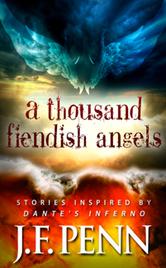 But if you want me to try to call out something that is currently exclusive to Kobo, one that I quite enjoyed is the special “Inferno” tie-in linked short stories that J.F. Penn wrote as part of a major “The Descent” contest that Kobo ran just prior to Dan Brown’s latest big release. Fans of Dan Brown or James Rollins are likely to enjoy the wonderful “Easter Egg” references and enriched links to Dante’s classic work within the pages of J.F. Penn’s A THOUSAND FIENDISH ANGELS – three wonderfully intriguing tales called Sins of the Flesh, Sins of Treachery and Sins of Violence.
But if you want me to try to call out something that is currently exclusive to Kobo, one that I quite enjoyed is the special “Inferno” tie-in linked short stories that J.F. Penn wrote as part of a major “The Descent” contest that Kobo ran just prior to Dan Brown’s latest big release. Fans of Dan Brown or James Rollins are likely to enjoy the wonderful “Easter Egg” references and enriched links to Dante’s classic work within the pages of J.F. Penn’s A THOUSAND FIENDISH ANGELS – three wonderfully intriguing tales called Sins of the Flesh, Sins of Treachery and Sins of Violence.
This is a great way to check out J.F. Penn’s writing so you can enjoy her riveting ARKANE series featuring Dr. Morgan Sierra who is much more than a female “Indiana Jones.”
Here’s <"a href="http://www.kobo.com/ereaders?___store=canada_english_cad&style=onestore">a link to the various readers and free APPs
(Kobo is available on all devices and computers, so you don’t need to own a Kobo to enjoy them.)
Thanks, Mark. Kobo and Indie Bound are exciting places for writers today. We appreciate you sharing your expertise with us.
Darcy’a Note: One of the cool things about Kobo is its partnership with the American Booksellers Association and IndieBound. You can
find all my Kobo eBooks at the Kobo website here . But I’d rather you shop at That Bookstore in Arkansas by following these links:
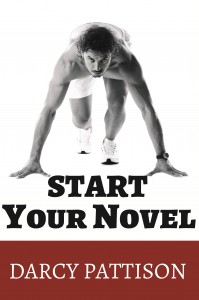
Find the Kobo eBook at That Bookstore's Website
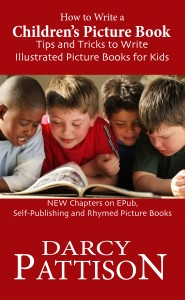
Shop Locally! Thanks for supporting That Bookstore in Blytheville, AR
Intrigued and want to learn more? SelfpublishingPodcast.com did a 1 1/2 hour conversation with Mark that is available on YouTube (rated PG13!).
If you can’t see this video, click here.


By:
Darcy Pattison,
on 3/30/2013
Blog:
Darcy Pattison's Revision Notes
(
Login to Add to MyJacketFlap)
JacketFlap tags:
apple,
Kindle,
ebook,
indesign,
smashwords,
epub,
nook,
kobo,
ibookstore,
how to sell ebooks,
ibookauthor,
Add a tag

A cat says ________.
A dog says________.
A skunk says______. (We don't know!)
Watch this video to hear a skunk, a ground hog, a bison and more.
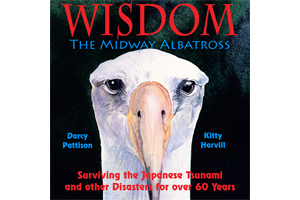 My picture book, WISDOM, THE MIDWAY ALBATROSS is now available as in iBook. To access it, you must go to the iBook app on your iPhone or iPad. Then, search for the iBook. Or, click here to be taken to the page on iTunes.
My picture book, WISDOM, THE MIDWAY ALBATROSS is now available as in iBook. To access it, you must go to the iBook app on your iPhone or iPad. Then, search for the iBook. Or, click here to be taken to the page on iTunes.
Do you want your book to sell as an ebook? Here are some of the things you must consider.
Ebooks on Multiple Platforms
First, there is an industry-wide ePub standard. But almost no one goes by it. This means that you can put your book up as an ePub, but you’ll have to tweak the files for each and every platform you want to put it on.
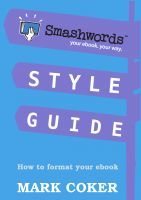 The easiest method is to work with Smashwords, which allows ePubs now, or has a MeatGrinder to convert files. You will most definitely want to read Smashwords owner Mark Coker’s Smashwords File Guide. It is a simple explanation of the variables involved in formatting your book. Smashwords has multiple distributions and many people just upload it here and let Smashwords take care of distribution to these platforms: Sony, Barnes & Noble, Kobo, Amazon, Apple, Diesel, Page Foundry, Baker & Taylor Blio, Library Direct, Baker & Taylor, and Axis 360 . But others prefer to move on to other platforms themselves.
The easiest method is to work with Smashwords, which allows ePubs now, or has a MeatGrinder to convert files. You will most definitely want to read Smashwords owner Mark Coker’s Smashwords File Guide. It is a simple explanation of the variables involved in formatting your book. Smashwords has multiple distributions and many people just upload it here and let Smashwords take care of distribution to these platforms: Sony, Barnes & Noble, Kobo, Amazon, Apple, Diesel, Page Foundry, Baker & Taylor Blio, Library Direct, Baker & Taylor, and Axis 360 . But others prefer to move on to other platforms themselves.
Nook: You can upload your ePub documents to Nook at pubit.barnesandnoble.com.
Their process has a built in viewer so you can see what your book will look like on these devices.
Kindle: Go to the kdp.amazon.com program and set up an account to get started. Kindle formatting is not ePub and you must convert your files. KDP allows for distribution on Amazon stores in multiple countries: Germany, France, Spain, Portugal, Italy, and India. Of course, if you want it in different languages, you must translate it yourself, then upload the translated files.
Kobo: Not a new player, but one to take notice of now, Kobo recently signed a deal with the Independent Booksellers to make Kobo the preferred platform in your local indie. They are working together to promote books in new and fresh ways. The Kobo App is available on almost any platform. You can get on Kobo through Smashwords, or by directly uploading to them. They accept an ePub format and will convert it as needed to their format.
Apple iBooks: The strange thing about Apple’s iBook platform is its limitations. iBooks is an app for iPhone or iPad, but there’s no app for Android, desktop Macs, or other platforms. Sales go through the iBookstore, which is part of iTunes. Some argue that iBooks won’t take off until they pull the books out of iTunes. The real advantage of Apple is their international reach, which allows you to put your book into 52 different countries. Again, you must translate yourself; if you only put up English, you may get some sales, but it won’t take off. Apple provides free software, IBookAuthor, which allows you to embed audio and video and is generally touted as a boon to textbook writers. Of course, that just increases your copyright headaches, as you must make sure you have permissions for all images, sounds, music, video, multimedia, etc. But it’s totally cool to include video. I put an introductory video on the new Wisdom iBook. If you have ePub files, they may work on Apple’s platform, but you can’t get around the requirement that you use a Mac Computer to upload at iTunesConnect .
There are other platforms, of course. Vook touts their video-embedded ebooks, while other platforms have other specialties.
PDF Ebooks. Technically not an ePub, but still often referred to as an ebook, are pdf versions of your book. You can sell these from your website through a sales management site such as ejunkie.com. It allows you to upload your files, then handles the transaction and sends a notice to the buyer when the financial transaction is finished, so they can download their file. Goodreads.com also allows you to sell pdf
Software to Create EPubs
What a tangled web there is when you consider converting your book to ePub!
First, most of the major platforms will convert for you. But you’ll want to create the ePub first. Here are some options.
Adobe Indesign. The premiere book/publishing layout and design software from Adobe has made it easier than ever to convert to an ePub. Indesign CS6 allows for flexible layouts, so you can create both portrait and landscape versions of your book for the tablet requirements. Many magazines use Indesign and create the flexible layouts to publish. You can export in a digital format, too, which should meet ePub requirements. The cost of Adobe products continues to escalate and they update so often that it is outdated quickly; therefore, they now offer a monthly subscription that I am reluctantly moving to.
Adobe’s Digital Publishing Suite is not the same thing; it is used more by magazine publishers than book publishers, and by iPad app developers. This is because through this software, you can upload to the Apple App store, but NOT to the Apple book store. Think carefully where you want to sell your product when you choose your Adobe software. Do you want an app (DPS) or an ebook(InDesign)?
Apple’s iBookAuthor. On the other hand, Apple’s price is right: free. iBooksAuthor is one of the easiest, most-intuitive programs to use, but it comes with a major disadvantage. When you create an ebook with this software, you may sell it on Apple’s iBookstore and no where else. This means you will probably do a separate version just for them. The biggest advantage of Apple is that you can sell to 52 countries. And Apple seems to me to be a sleeping giant: if they ever decide to push ebooks, like they do music and video, look out.
Sigil. Open software, Sigil lets you look at the inside of your ePub and–if you are brave and knowledgable–make changes.
Calibre. A desktop ebook reader and editor, Calibre allows you to edit the metadata, add a book cover and convert to some formats. A free, open-source program, it’s useful to have around.
My Workflow
Well, to be honest, it changes every time I get ready to do this, because the development of software, platforms and everything about ebooks changes so rapidly. But in general, what I’ve done is to layout a book in InDesign, then export as an ebook and as a pdf. In Sigil, I can change anything I need to on the “guts” of the ebook. I use that for Smashwords, Kindle, and Nook. I’ll use it for Kobo next time, too, since their connection to Independent Bookstores has raised their profile. I use the pdf with ejunkie.com to sell on my own site.Then, I do a completely new version in iBookAuthor for Apple. Such a pain. Hard to keep track.
At times, I have also hired someone to convert to the standard ePub, then done any tweaking needed for a different format. I’ll be so glad when everyone abides by a given standard! Right now, the biggest drawback to ePubs is the fragmented platforms and their individual requirements.
Helpful books
 Elizabeth Castro rocks. Essentially, an ePub is a set of images and text that are put into an html file, controlled by a CSS (cascading style sheets) file, and then zipped into one file. This means that if you mess with the guts of the ePub, you need advice from someone who understand html and css and can explain it in relatively simple terms. Elizabeth Castro has a suite of books that does just this.
Elizabeth Castro rocks. Essentially, an ePub is a set of images and text that are put into an html file, controlled by a CSS (cascading style sheets) file, and then zipped into one file. This means that if you mess with the guts of the ePub, you need advice from someone who understand html and css and can explain it in relatively simple terms. Elizabeth Castro has a suite of books that does just this.

 Kobo has also expanded its self-publishing platform Kobo Writing Life by adding new languages. As of today, the tools are available in German, French, Italian, Portuguese and Dutch. The company has plans to release functionality in additional languages over the coming months.
Kobo has also expanded its self-publishing platform Kobo Writing Life by adding new languages. As of today, the tools are available in German, French, Italian, Portuguese and Dutch. The company has plans to release functionality in additional languages over the coming months.
Kobo launched the self-publishing tool in July and has doubled its size month-over-month. The eBook company will also acquire digital publishing technology company Aquafadas to expand the tools available for formatting digital content. The terms of the deal were not disclosed.
AppNewser has more: “Aquafadas offers publishers the tools to format magazines, comics and other types of content into rich media content. This includes the ability to make HTML5 content, plugins for InDesign and a comic book creation tool. With the acquisition, Kobo expands its rich media offerings.”
New Career Opportunities Daily: The best jobs in media.

There is something very satisfying about reading an entire book in one sitting. Part of the pleasure of Julian Barnes’ Booker Prizing winning novel, The Sense of an Ending, is that you can spend a deeply pleasurable and indulgent afternoon devouring the book whole. You don’t have to worry about forgetting who said what when, of losing track of the plot as you nibble your way through the pages, piecemeal, when you get a moment here or there. The book is completely with you and the reading experience all the richer for it.
Last week we launched a new series of eBooks written with this experience in mind. The Penguin Shorts can be read over a long commute or a short journey, in your lunch hour or between dinner and bedtime, these brief books provide a short escape into a fictional world or act as a primer in a particular field or provide a new angle on an old subject.
To introduce you to the series, we are going to blog our way through all nine of the launch books, as we read through the series on our way in and out of work. To kick off, I’m starting with Colm Tóibín’s A Guest at the Feast. Celebrated as one of the finest novelists and short story writers of his generation Colm Tóibín, in his Penguin Short, turns his hand to his first piece of memoir, moving from the small town of Enniscorthy to Dublin, from memories of a mother who always had a book on the go to the author's early adulthood, from a love of literature to the influences of place and family.
To Work: 388 from Victoria Park Road to Embankment (50 minutes)
View Larger Map
It was bitterly cold yesterday morning. It proved difficult to keep my reader still as I tried to steal away the first few pages while keeping my morning vigil for the 388 to take me into work. It’s a good journey, I always get a seat and it allows for just shy of an hour of solid reading time. A Guest at the Feast opens with
Japanese e-commerce firm Rakuten has acquired e-reading service Kobo for $315 million.
The move follows Rakuten’s acquisition of internet retailer Play.com earlier this year for £25m in cash, as part of the company’s European expansion plan.
read more
Bloomsbury is anticipating W H Smith's link-up with Kobo to sell e-readers will help create "another big Christmas" for e-books, as the Group's e-book sales grew by 564% over the first six months of 2011.
read more
W H Smith has trained 6,000 staff, installed working units into stores and readied television and press advertising following its new "long-term" partnership with Kobo.
read more
By: GraemeNeill,
on 7/25/2011
Blog:
Schiel & Denver Book Publishers Blog
(
Login to Add to MyJacketFlap)
JacketFlap tags:
digital,
Google,
apps,
Kobo,
Philip Jones,
mike serbinis,
Apple,
Home,
Amazon,
booksellers,
Add a tag
Kobo has removed the direct e-bookselling links from its Apple apps, following new rules brought in by Apple earlier this year.
read more
I was surprised to notice I've sold many Killer Career ebooks in the Kobo format. I don't even own a Kobo, but I guess I better do a Google and find out what one looks like. Apparently, they're pretty popular.
For some reason, I thought most people had kindles, like I do. Mine's a kindle 3.
Many years ago, I also owned a Palm. It's in my cabinet somewhere. The screen was too small for me to be comfortable reading from it. I also own an Iphone, but again, the screen is too small for me to enjoy reading on it.
What about you? Do you have an eReader? If so, what kind? If not, why not?
Morgan Mandel
Killer Career 99 cents
on
Kindle
and
Smashwords
Kobo has unveiled a new touchscreen version of its e-book reader at Book Expo America, which it is aiming at less digitally savvy book buyers.
Speaking to the Financial Times, Kobo chief executive Michael Serbinis described the e-book market as David versus the Goliaths of Apple and Amazon.
read more
By: executivepublisher,
on 1/29/2011
Blog:
Schiel & Denver Book Publishers Blog
(
Login to Add to MyJacketFlap)
JacketFlap tags:
Publishers Weekly,
Man Booker Prize,
Print-on-Demand,
book publishing industry,
children's book publishers,
Harpercollins uk,
book publishing news,
Kobo,
book publishing companies,
book publishing company,
christian publishers,
christian book publishers,
Borders Group Inc,
book publishing,
Add a tag
Borders Group Inc may find that filing for bankruptcy is the next plot turn in its many-chaptered struggle to survive.
Bankruptcy court could push the second-largest bookstore chain, its lenders and book publishers to make sacrifices and give the company a chance to keep going. As it stands now, book publishing sources see little progress in financial talks with lenders, and the company continues to need cash.
Borders President Mike Edwards said on Thursday in a statement announcing a conditional credit agreement with GE Capital that while refinancing is preferred, restructuring in court — referring to a bankruptcy filing — is a possibility it is considering.
Borders spokeswoman Mary Davis declined to comment beyond that statement.
The standoff comes after a year in which Borders has cut costs, refinanced and brought in new investors to cope with shriveling sales and market share.
Now the company has stopped payment to some vendors and even asked its most important suppliers — the book publishers — essentially to loan it the money due for books shipped months ago.
Only with those concessions by book publishers as well as other new landlord and vendor financing agreements will the company’s bank replace a maturing credit line.
“Bankruptcy is a wonderful tool for taking the majority of interests and implementing a plan that may be over the objections of a minority of interests,” said Michael Epstein, a managing partner at chess restructuring advisory firm CRG Partners who is not involved in the situation.
The company would be able to close unprofitable stores more easily and book publishers would begin getting paid again in most cases for any products shipped in bankruptcy, he said.
On the other hand, he cautioned, the company would need to have a plan for the changes it wants to ensure that it closes the right stores before the clock runs out.
Since 2005, bankruptcy law has allowed only about 9 months for retailers to easily close stores — a deadline many industry players say is one of the reasons why Circuit City ended up quickly liquidating its assets in bankruptcy.
In a bankruptcy restructuring, the company will likely not be obligated to pay christian book publishers for the books it shipped before the bankruptcy filing, according to Ken Simon, a managing director at Loughlin Meghji restructuring advisory firm who is not involved in the matter.
If the restructuring stays out of court, the vendors will have to be paid back in full or agree to a cut.
“The lack of liquidity is the reason why companies have to go into bankruptcy,” Simon said.
By: executivepublisher,
on 11/27/2010
Blog:
Schiel & Denver Book Publishers Blog
(
Login to Add to MyJacketFlap)
JacketFlap tags:
JFK,
book advances,
book publisher,
Kobo,
industry gossip,
Executive,
global book shows,
booksales,
Guinness World Records,
Schiel and Denver,
Schiel & Denver Book Publishers,
book publishing companies,
Shiel & Denver,
Japanese Book Publishing,
Cat burglar,
Futabasha Publishing,
Hajime Karasuyama,
Japanese Book Publishers,
libraries,
Books,
book,
Amazon,
booksellers,
Borders,
book publishing,
random house,
travel writing,
literary agent,
POD,
Frankfurt Book Fair,
Add a tag
One of Japana’s major book publishers, Futabasha Publishing, claims that a first print run of 10,000 copies of “Occupation, Thief; Annual income, Y30 million” has almost run out in the 10 days since publication.
Hajime Karasuyama – the pen name of the career burglar – claims to have developed the uncanny ability to guess just where the occupant of any home will have stashed the cash and valuables and provides tips on how to gain access to a locked property and then get away again without leaving any signs.
Karasuyama says he earns around $470,000 a year from burglary. The Japanese police are investigating.
However, in the meantime, Karasuyama who has a forensic history as a Japanese thief, and who describes himself as a gentleman cat burglar, has taken the book publishers by storm by become a best-selling author after writing a book giving tips on how to carry out burglaries.
“Once we get inside a house, us thieves have an instinct for knowing where the money is squirrelled away,” Karasuyama told the Shukan Taishu magazine in an interview about his book — which carries the warning “Please do not attempt to copy me” as its subtitle.
Karasuyama provides details on how to pick any lock and silently use a glass cutter on a window. In this exclusive book publisher edition, he reveals that placing a jeweller’s magnifying eyepiece against a door peephole reverses the view and enables him to look inside the house, while he recommends a hybrid car for going on “jobs” because they are very quiet.
The publisher dismissed suggestions putting out what amounts to a manual of how to become a burglar is irresponsible. “This book is not targeted at people who might want to be a burglar but more at homeowners who want to know how they can better protect their home,” Kenichi Nakazawa, the book’s editor, said.

By: executivepublisher,
on 11/21/2010
Blog:
Schiel & Denver Book Publishers Blog
(
Login to Add to MyJacketFlap)
JacketFlap tags:
Harpercollins uk,
Gutenberg Project,
Kobo,
Transworld,
Guinness World Records,
U.S. Government,
Print On Demand Publishing,
Writers Trust,
online book publishers,
Harpercollins,
travel writing,
literary agent,
Wall Street Journal,
White House,
Rupert Murdoch,
Add a tag
Sarah Palin’s book publishers have been forced to file a lawsuit after pages of her upcoming memoir were leaked.
HarperCollins Book Publishers filed legal papers on Friday against the company Gawker Media after they refused to remove pages from Palin’s second book America By Heart: Reflections On Family, Faith And Flag from their website.
on Saturday, a judge issued a temporary restraining order against Gawker, saying it had to take down the pages — which it did, removing the images and commentary relating to them — most shockingly, perhaps, without making any further comment.
Publisher HarperCollins — which is owned by Rupert Murdoch’s News Corp., which also owns Fox News, the network that employs Palin as a commentator — brought the suit in New York district court on Friday.
HarperCollins Publishers spokeswoman Tina Andreadis told the Wall Street Journal Saturday evening, “We see the ruling as a victory. Gawker shouldn’t have posted this. It’s a copyright infringement. We are defending our author and our publication.”
But is it infringement? What harm was there in bringing Palin’s pages to light last week? The book is not in draft form — in fact, it’s completely finished and will be in bookstores on Tuesday. Barring some kind of strange machinations, every page that Gawker put on its website will be available for anyone interested to see in just a few days.
The hearing about Gawker’s posting of Sarah Palin’s “America by Heart” is scheduled for Nov. 30.
According to The AP, a judge has now ordered Gawker to remove the offending pages until the issue has been resolved in court.
They had uploaded around 20 pages from the book to their site ahead of its publication date of November 23.
The lawsuit against Gawker will begin in a hearing on November 30.

Are apps marketing devices for authors and books, or a new revenue stream? This is just one of many questions book publishing companies are asking as they develop apps from their content. When PW approached large and midsize publishers to find out about their app programs, we discovered that many houses don’t have “programs” per se. Questions loom about what content is best suited for apps—though overwhelmingly it seems that reference and children’s are sweet spots—and how best to look at apps. Should apps be created with the goal of bringing in money independent of books, or as tools to market books and authors? And how do publishers define an app? Many said it was simply anything that could be sold in the App Store. This may soon change, as rumors have swelled that Apple will add restrictions on what can be sold in its App Store. (Currently, a book publisher can adapt an e-book and sell it in the App Store even if it doesn’t feature any content added to the original.) Right now, though, publishers are dipping their feet into this market slowly and, with the exception of a few houses, cautiously.
Random House
Random House has done dozens of apps so far. According to Nina von Moltke, v-p of digital publishing development, RH decides what books might make good apps by looking “at specific categories, brands, and titles for which an experience beyond e-book would provide a significant benefit.” The most obvious, not surprisingly, are children’s, lifestyle, travel, reference, and, occasionally, celebrity books. Asked how RH differentiates between an app and an enhanced e-book, von Moltke said an enhanced e-book could be an app, since anything sold in the App Store is considered an app. Speaking to notable apps in the pipeline, von Moltke said there are more apps to come from Fodor’s—there are currently five Fodor’s apps, mostly city guides, available in the App Store—as well as apps based on children’s books, including two from the house’s Schwartz & Wade imprint: Princess Baby and How Rocket Learned to Read. (In September RH announced a partnership with the digital media agency Smashing Ideas to create apps for its children’s titles.) RH is also prepping a bartender app and a number of language apps.
Simon & Schuster
Simon & Schuster’s chief digital officer, Ellie Hirschhorn, said S&S is “learning a ton” from its app development. “Apps should be an extension of the book,” she said, so S&S apps mostly contain excerpts or links to books, whereas e-books “should be sold in e-bookstores,” due to differences in how apps and e-books are priced, marketed, and discovered by customers. S&S’s first app was the 365 Crossword Puzzles app, which was recently revamped for the iPad; since then Hirschhorn estimates S&S has done two or three dozen more apps in broad categories: apps for fans (such as Jodi Picoult’s, which lets readers follow the author through social networks, blogs, and other media); utilities (cookbook apps, The Klingon Dictionary, and Pimsleur 2Go language apps); and games (Bro to Go, based on The Bro Code). S&S does much of the front-end design for the user experience in-house, but usually outsources the back-end coding. Prices range from free for the Picoult to $11.99 for The Klingon Dictionary.
Sourcebooks
The difference between enhanced e-books and an app is simple, Sourcebooks CEO Dominique Raccah, said: “It’s interactivity; if the reader can do stuff with the content, it’s an app.” Earlier this year, at the Tools of Change conference in New York, Raccah outlined an ambitious plan to develop apps based on the Sourcebooks list, citing mo
By: executivepublisher,
on 10/5/2010
Blog:
Schiel & Denver Book Publishers Blog
(
Login to Add to MyJacketFlap)
JacketFlap tags:
book publishing,
ebooks,
digital publishing,
ebook,
Barnes & Noble,
book publishing industry,
children's book publishers,
electronic publishing,
book publishing news,
book publishers,
Kobo,
book publishing companies,
book publishing company,
Add a tag
Michael Serbinis likes to think of himself as a David, but on this recent evening he looks more like a Steve — Steve Jobs to be exact.
It’s a rainy night in Toronto and about two dozen members of the city’s book publishing companies and media circles have gathered in a basement theatre at a swanky Yorkville hotel to hear from Mr. Serbinis, chief executive of Canada’s e-publishing startup, Kobo Inc.
As he stands at the front of the darkened theatre clutching a can of Red Bull, Mr. Serbinis is trying to do his best impression of the Apple Inc. CEO. There’s even an Applelike air of secrecy to the event, with everyone in attendance being asked to sign a non-disclosure agreement on the way down in the elevator.
In typical Steve Jobs fashion, at a methodical pace he walks the audience through a series of eye-popping stats to illustrate Kobo’s growth over its nine-month history before taking a few subtle digs at his competitors.
Finally, he tops it all off with the unveiling of a new product: Kobo’s new wireless eReader, the latest addition to the company’s arsenal in the battle for control over the exploding market for electronic books.
“I know what you’re thinking, ‘Now I have to sign an NDA to go to a Kobo event? What is this, Fight Club?’ ” he says with a laugh. “Well, when you’re David and you’re fighting Goliath, every day feels like Fight Club.”
The Goliaths of which Mr. Serbinis speaks are indeed the titans of the technology industry and present a formidable challenge for the young company. Kobo’s eReaders and digital bookstore compete with Amazon.comInc.’s Kindle reader, digital offerings from Google Inc. and, of course, the iPad and iBookstore operated by Apple. But so far, Kobo is holding its own. Since launching in December, Kobo has attracted more than a million users to its service. Each week, its applications, which run across multiple smartphones, on book publisher websites and various e-readers and tablets, are accessed from more than 200 countries. There are now more than 2.2 million digital books available in the Kobo store. Its eReaders are sold in bookstores across North America and around the world.
When the company, which is privately run and does not publish financial details, launched it had just 20 employees; by the end of this year, Kobo’s head count will be close to 200, said Mr. Serbinis, who allows that net revenue is growing at between 300% and 500% per quarter.
What separates Kobo, whose parent company, Indigo Books & Music Inc., owns 60% of the Toronto startup, from its competitors is its singular focus on digital books and digital books alone, Mr. Serbinis said in an interview.
Unlike Amazon, the company doesn’t sell physical products — except its eReaders — and its devices aren’t multi-purpose machines such as Apple iPads.
“We’re the only pure play that’s in this game and from the very beginning we’ve focused on being global, being open and being the best partner for all the device manufacturers for booksellers,” he said. “Those three things combined with the fact that the market has just exploded, that’s a recipe for massive growth and scale.”
Digital books aren’t a new business, but the increasingly popularity of smartphones, tablet devices and Web-enabled e-readers such as Sony Corp.’s Reader — all of which support Kobo’s e-book store– is beginning to prompt book lovers to think about going paperless.
Sales of electronic books are rising at such a breakneck pace that they’re beginning to take a significant bite out of traditional and self publishing revenues. Mr. Serbinis said that when the company launched, it

















 A cat says ________.
A cat says ________.

 Elizabeth Castro rocks.
Elizabeth Castro rocks. Kobo has also expanded its self-publishing platform Kobo Writing Life by adding new languages. As of today, the tools are available in German, French, Italian, Portuguese and Dutch. The company has plans to release functionality in additional languages over the coming months.
Kobo has also expanded its self-publishing platform Kobo Writing Life by adding new languages. As of today, the tools are available in German, French, Italian, Portuguese and Dutch. The company has plans to release functionality in additional languages over the coming months.




 and
and 
In other breaking news, U2’s new album will soon be available on 8-track tape.
BURN!
Hmm… I notice the “related” posts on the site!
Yeah… Marvel’s been on Nook since at least 2011.
But… Kobo seems to have good market penetration in foreign markets. Canada, Japan, New Zealand, Australia, France… all major publishing markets. Germany seems to be dominated by Deutsche Telekom’s Tolino (four major chains (including Bertelsmann), plus 1+K independent retailers).